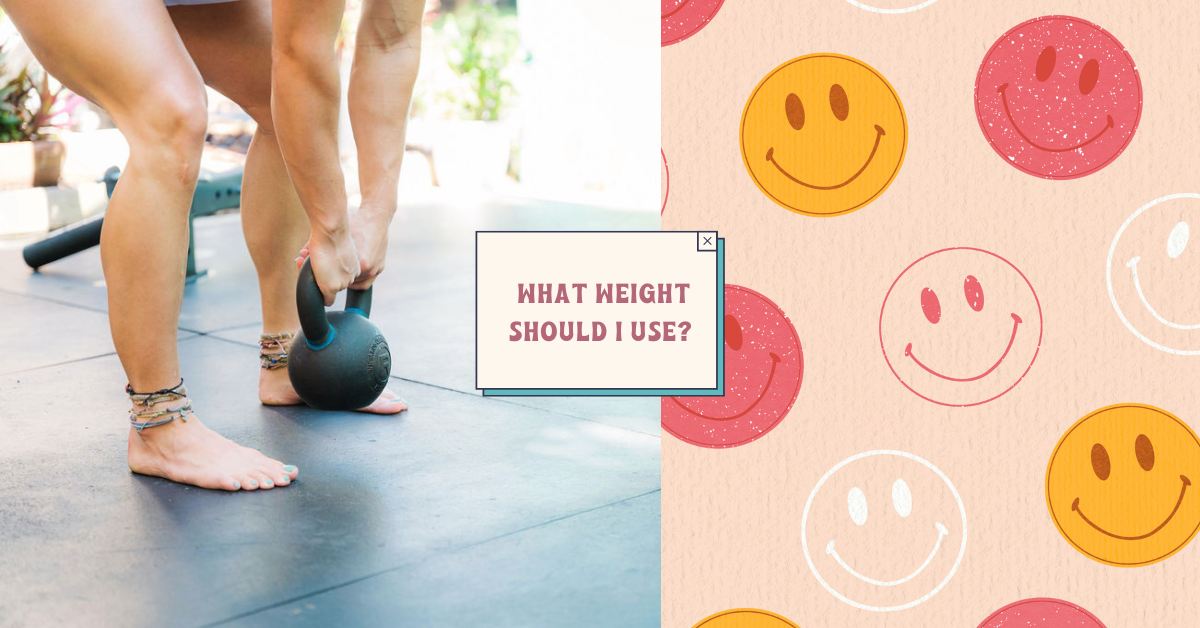The ol’ “How do I know what weight to choose if it’s not prescribed or based off the percentage of my 1 Rep Max?” question..
Let me tell you a secret, * I have RARELY if EVER used percentage based protocols and we still out here making gainz, and hitting PRs *
How to choose your loads with out using percentages
In our programs, you will very very very rarely see prescribed weights or percentages for strength or accessory work because your ability to perform will depend on SO many factors and can vary day-to-day. With this approach of training will will learn how to tune into your capacity in real-time, and learn how to make an educated decision on loading based on previous workouts, AND how you’re feeling each day. This may take some trial and error but here are some pointers on how to approach your lifts:
#1 If there is a rep range like 10-12 per set, try to hit the top end range with solid form and staying true to the tempo (if given). If you’re able to perform the tempo AND the top of the rep range, try moving up a bit in weight on the next set or the next time the movement appears in the training cycle.
#2: Log your results!! Pay attention to the loads you performed in previous weeks. As repetitions decrease, or increase through the cycle, you may want to increase the load, OR stay at the same load with an increase in reps.
How much load you can increase will vary from person to person., and week to week, but the goal with using similar patterns is to allow you a chance to progress in load and movement quality.
#3: Remember that even with bodyweight or a small load, holding to strict tempo and activating the correct muscles will provide a fantastic stimulus with a good amount of time under tension. So if your noticing your quality of movement is suffering, stay conservative and prioritize the QUALITY of movement rather than focusing on overload and your movement quality suffering.
#4: With conditioning work, this is just trial and error. After some practice, you will develop a feel based on the intent of the piece, the duration, and other factors. But when in doubt use lighter weight until you are confident your movement quality can be sustained throughout every set.
How to use RIR aka Reps in Reserve
RIR, which stands for Reps in Reserve, is a way to measure the intensity of your workout based on how many more repetitions you could theoretically perform before reaching failure. In simpler terms, it’s an estimate of how much gas you have left in the tank after completing a set.
Here’s how it works:
- Perform a set of an exercise. Let’s say you do 10 squats with good form.
- Think about how many more reps you could have done. Be honest with yourself! If you were truly pushing yourself, but could have squeezed out maybe 2 more squats with proper form before collapsing, then your RIR for that set would be 2.
- The lower the RIR, the harder the set. A set with 1 RIR would be incredibly challenging, while a set with 5 RIR would be more moderate.
RIR is a helpful tool for several reasons:
- It’s more personalized than traditional rep ranges. Instead of blindly following a 8-12 rep scheme, RIR allows you to adjust the weight or difficulty based on your own strength and fitness level.
- It can help you avoid overtraining. Pushing yourself to failure too often can lead to injuries and burnout. RIR helps you find the sweet spot where you’re challenging yourself without going overboard.
- It can be used with any exercise. Whether you’re lifting weights, doing bodyweight exercises, or using cardio equipment, RIR can be a valuable metric for tracking your progress.
Here’s a handy RIR scale to give you a better idea of how it works:
| RIR | Feeling | Difficulty |
|---|---|---|
| 1-2 | Extremely hard | Near failure |
| 3-4 | Very hard | High effort |
| 5-6 | Moderately hard | Challenging |
| 7-8 | Moderate | Comfortable effort |
| 9-10 | Easy | Could do more reps |
Remember, RIR is subjective, so it takes some practice to get good at gauging your own reserves. It’s also important to listen to your body and adjust the weight or difficulty if you feel something is off.
